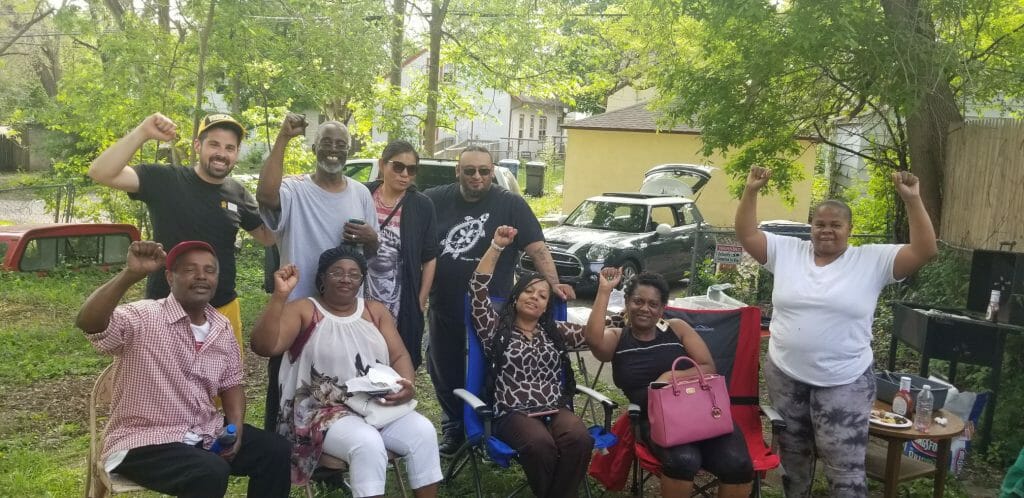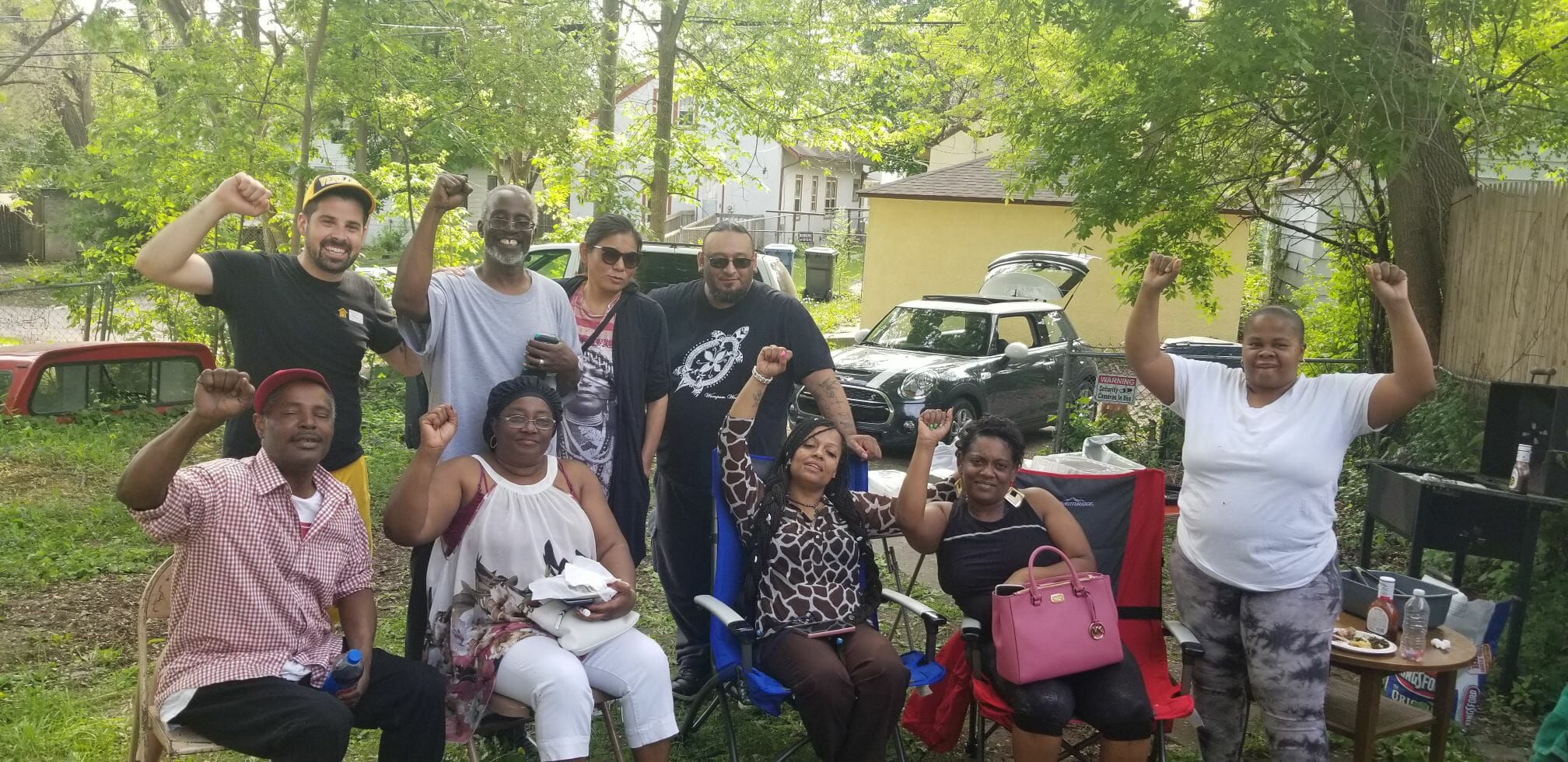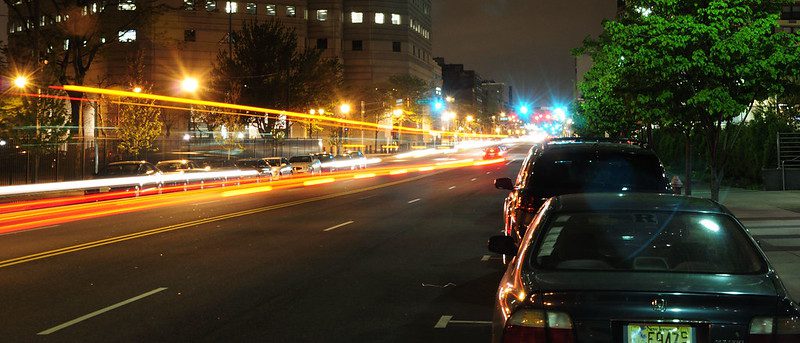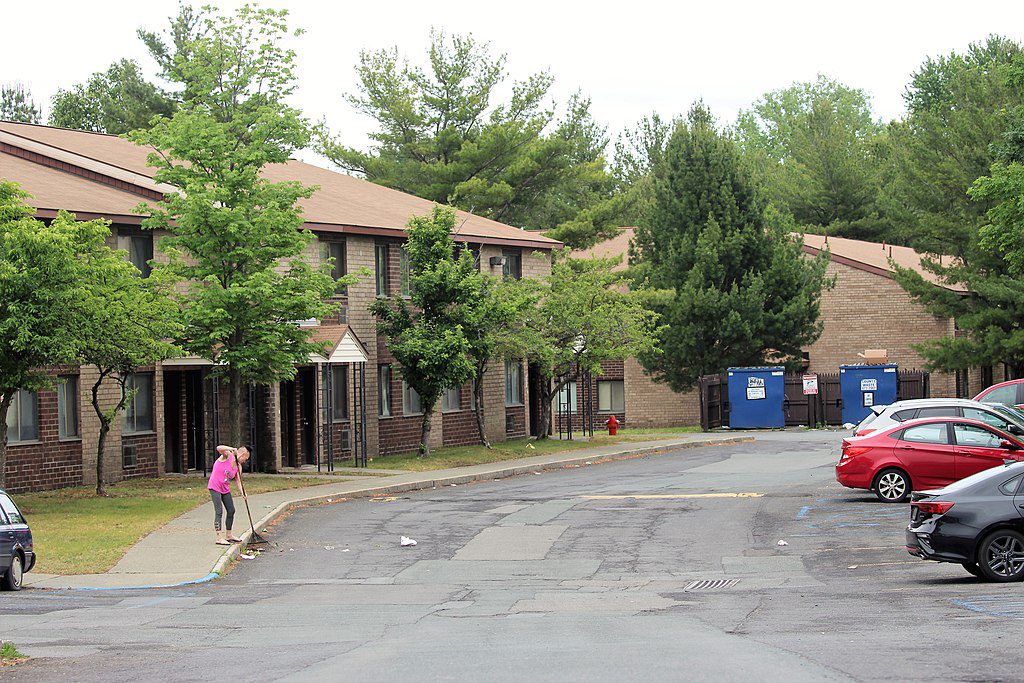
Renters from different buildings owned by Mahmood Khan during a group meeting and barbecue in 2018. Photo courtesy of Arianna Feldman
What’s been happening with the affordable housing projects that were being built on transit-owned land? How has COVID affected the work of police officers, medical providers, and social services representatives who gathered weekly to help at-risk residents get the services they need? How are those Minneapolis tenants faring who were facing eviction despite getting their negligent landlord’s license revoked? We take a closer look.
Benefiting From the Work That Has Been Done
“Affordable Housing on Transit Land,” September 2019; and “In Defense of the Poor Door,” October 2015
A new development in Seattle relates to (at least) two Shelterforce articles in the past several years. The 365-unit high-rise affordable development at Madison and Boylston will be 17 stories tall, the city’s first high rise designated as affordable housing.
It’s also located on land owned from Sound Transit, which has had a policy since 2018 to prioritize affordable housing as a use for land it owns, which helps to increase transit-access for lower-income residents. In our 2019 article “Affordable Housing on Transit Land,” we examined some of the logistical challenges that Capitol Hill Housing faced in developing a large affordable housing development on the land, having to do with different requirements for land ownership and length of affordability between the city, the transit agency, and the lenders.
Bellwether Enterprise, the developer of the newer property, has another project underway on transit land as well, and in both cases benefited from that early laborious process, with some answers and workarounds having been already established. “I was really glad not to be the first,” says Susan Boyd, CEO at Bellwether. “Because of the way paved by the Capitol Hill site— and another one out in the Rainier Valley that was developed by Mercy Housing Northwest—because of the the advance ground laying that they did, ours was a bit easier.” Boyd mentions that the RFP process coming from Sound Transit has gotten much simpler, and they’ve gotten “much more comfortable” with a fee-simple land sale, something that was a challenge with the Capitol Hill project.
That isn’t to say that projects like these are now without challenges. There have been many, including needing easements for transit infrastructure on the site that is integrating with a light rail station, gaining access to the sites before closing for site preparation work, collaborating on site design that works for commercial tenants as well as transit users, and negotiating the land price down for the Madison and Boylston site, which is right near downtown.
Still, the transit agency has “really internalized this notion that they’re not just a transit agency,” says Boyd, “that they have a role to play in building a vibrant community and that it’s good for ridership to build density around their transit nodes, but it’s also good for the jurisdictions that they serve.”
By describing the project on Madison and Boylston as a “twinned” building with “separate entrances” on two different streets, the project description might also remind some readers, though not intentionally, of the furor over a development in Manhattan that had one entrance for its market-rate units and another for its affordable units, the latter dubbed the “poor door” by opponents. Rick Jacobus noted in Shelterforce “In Defense of the Poor Door,” that really the development was two buildings, and that since the benefits of inclusionary housing largely had to do with access to a given neighborhood, not a given building, that perhaps the problem was overstated.
The Seattle building is quite different, being 100 percent affordable. It does constitute two separate developments, because one utilizes 9 percent LIHTC credits (Low Income Housing Tax Credit) and one uses 4 percent credits. For tax purposes it’s important that financing involving the two kinds of credits stays very separate—in this case they are even being handled by two different developers. The project using the 9 percent tax credits constitutes a few floors of permanently supportive housing for people exiting homelessness, developed by Plymouth Housing, which exclusively develops supportive housing. That project has smaller units and a significant level of integrated services and more staffing at its entrance. The rest of the building, developed with 4 percent credits by Bellwether Housing, are affordable family units. The separate entrances are primarily about financing and practicality, rather than isolation, says Bellwether Enterprise.
—Miriam Axel-Lute
The Hub Continues—Program Catches on in Massachusetts, Other States
“Connecting a City’s Services to Help At-Risk Populations,” 2019
The year before the pandemic hit, we wrote about a group of police officers, medical providers, and social services representatives who gathered weekly to help at-risk residents get the services they need—before an emergency—and reduce crime to boot. The group—the Chelsea Hub in Chelsea, Massachusetts—hasn’t missed a beat. Sure, weekly meetings have gone virtual since the pandemic began, but the work hasn’t faltered. In fact, it’s become more effective, says Dan Cortez, a community engagement specialist with the Chelsea Police Department. The virtual meetings, which include representatives from 25 different agencies, have been working so well that once things go back to normal—whenever that may be—the Hub will likely meet virtually as well as in-person, says Cortez.

The Chelsea Hub in Massachusetts works with families and individuals who may need services from more than one community agency. Photo courtesy of the Chelsea Police Department
The program is also catching on in other cities.
There are now 16 such groups in Massachusetts, including in Jamaica Plain and East Boston, one that recently launched in Philadelphia, and another in the works in Morristown, New Jersey. “More and more communities are reaching out,” says Cortez, who added that there’s a town in Wisconsin that’s working on starting a similar program.
While COVID has been a challenge, the cooperation the various departments and organizations have had over the last several years as part of the Chelsea Hub has created an efficient system of care. “The focus of the Hub is getting individuals out of risk. You’re getting together to mobilize a team to really help someone out, but in that process, you develop this well-oiled machine that is filled with people who want to be there.”
The group still has outreach workers on the streets—with PPE and social distancing in play, of course—to work with residents who are at-risk, and they’ve also communicated with those in need via phone and email.
“It’s not uncommon for an ER nurse to text me that an individual who is known to all of us … needs transportation to a shelter or they need to be taken to a detox or entered into mental health services. We can do that today, we don’t have to have that [wait] until the next meeting,” says Cortez.
The Hub has also inspired some spin-offs: A pandemic response team that’s loosely related to the Hub was created in Chelsea, and some Hub members are also part of the city’s Eviction Task Force.
“Everyone is working together. We had someone being evicted and we found out her husband is really ill and needs all sorts of other supports,” says Cortez, adding that there was concern that the husband and wife were being harassed by the primary tenant. “We all were able to support her.”
—Lillian M. Ortiz
Minneapolis Tenants Facing Eviction Become Homeowners
“Despite Win Against Landlord, Minneapolis Tenants Still Face Eviction,” 2018
“Have you thought about forming a community land trust?” a commenter posted in reply to a piece by Timothy Brown, who had written in Shelterforce about the poor housing situation he and others were experiencing in Minneapolis. Brown joined a tenants organization after his landlord—Mahmood Khan—had neglected to fix his home and lack of heat. They found out that Khan had not been keeping up with any of his properties and had received more than 3,000 citations from the city. The work Brown and others put in fighting Khan led to several wins, and the landlord eventually lost his rental license … but there was a catch.
Without a rental license, and because the homes were in such shoddy shape, the city set out to evict the tenants who lived on the property.
If you were wondering what happened to that story, we have positive news: The landlord sold some of his properties to the City of Lakes Community Land Trust, and the residents who lived at those locations signed contracts for deeds with the trust, allowing them to get on the path to becoming homeowners. The units they lived in were expected to be upgraded and repaired. The trust was also negotiating with the landlord to buy 35 other properties.
—Lillian M. Ortiz
|
While this piece is free to read, it’s not free to produce. Please consider supporting our small and dedicated team on Patreon. |






Comments